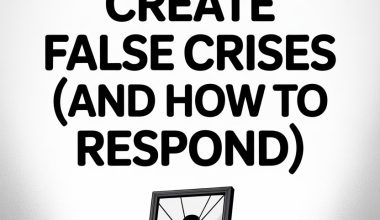If you’ve ever told your child “no” and been greeted with theatrical weeping worthy of an Oscar nomination, welcome to parenthood. Setting boundaries is part and parcel of raising small (and not‑so‑small) humans.
But how do you lay down the law without feeling like the villain in a Disney film? Spoiler: It’s entirely possible, and you don’t even need a cauldron.
Why Boundaries Matter Even When You’re Tired Enough to Nap Standing Up
Let’s get this out of the way: Boundaries aren’t about control, power, or being the schoolyard warden. They’re about helping children feel safe, learn limits, and eventually function as good roommates for someone else’s kid someday.
Research published in the Journal of Child Psychology and Psychopathology shows that consistent, loving limits actually reduce behavioural issues over time.
Yes, clear rules make life easier for you, but they’re also what kids need to thrive. The best part? Boundaries set now pay back in peaceful evenings later. Maybe not tonight. But one day.
Fear of Being the “Mean” One: Where It Comes From
Nobody wakes up thinking, “I’d like to be the super‑villain in my child’s story today.” Yet, it’s easy to fall into that trap. Maybe you grew up with strict rules and swore you’d be the “cool” parent.
Maybe another parent, grandparent, or social‑media influencer makes you feel like you’re doing it all wrong. Don’t get sucked in.
Kids protest when you draw lines—that’s part of their job. Standing firm doesn’t make you mean; it makes you reliable.
The “mean” label is usually code for “You’re stopping me from doing what I want.” Spoiler: That’s your job.
Clarity Is Kindness
Vague requests are an open invitation for negotiation, debate, and possibly a United Nations summit in your kitchen. Instead, be clear and concise. “Screen off in ten minutes” beats “Can you maybe turn that off soon?” every time.
Letting kids know what you expect helps them succeed. Consistency is key—a moving target breeds confusion (and mutiny).
If “no snacks before dinner” is your rule, stick to it, even if the puppy eyes are at maximum wattage.
Consistency Without the Cold Shoulder
Firm doesn’t have to mean frosty. “No, you can’t have ice cream before breakfast, but I’d love to read your story about the ice‑cream dragon,” keeps the bond warm. You’re not punishing; you’re redirecting.
When you enforce a boundary, do it with empathy. “I know you’re disappointed. I would love ice cream for breakfast too.” Validation doesn’t equal capitulation. It simply shows you see their feelings, even while you hold the line.
Pick Your Battles (But Actually Pick Them)
Not every situation is a hill worth dying on. If your child wants to wear their pyjamas to the supermarket—well, is it harming anyone?
Some boundaries keep kids safe or teach values, while others are just about parental convenience.
Ask yourself, “Will this matter in a week? A year?” If not, maybe it’s okay to let it go. Save your energy (and your “mean” points) for the stuff that really counts.
You Don’t Need to Explain Everything (But Some Explanation Helps)
Ever tried to reason with a toddler at bedtime? You might as well recite War and Peace backwards.
Still, a short explanation goes a long way, especially with older kids. “We leave the park now because it’s getting dark and you need rest to grow strong.”
The key is brief and matter‑of‑fact. There’s no need to launch into a TED Talk for every “no.”
Boundaries Aren’t Just for Kids
If you’re running yourself ragged to keep everyone happy, it’s time to check your own limits. That might mean saying no to another bake sale or pushing back when your partner signs you up for “just a small favour.”
Kids pick up on how you treat yourself. When they see you set limits around your own time and energy, they learn to value themselves, too. (Side benefit: fewer martyr points awarded at the annual family awards.)
The Secret Weapon: Connection Before Correction
Little ones—and big ones, too—are far more likely to listen when they feel connected. Before you set a boundary, spend a moment tuning in: a hug, a laugh, a few minutes down at their level.
Parenting coach Dr. Laura Markham calls this “connection before correction,” and it works wonders. A child who feels seen is less likely to go nuclear when you say “no.”
Don’t Fear the Tantrum
Tears, door slams, dramatic sighs—you know the drill. It’s tempting to backtrack when you’re faced with an emotional outburst, but it’s okay to let your child feel what they feel.
Your calm presence is more important than solving the meltdown.
Staying steady shows kids that big feelings are nothing to fear. Over time, they learn to ride those emotional waves rather than capsize the whole ship.
Boundaries and the “Public Meltdown”
Every parent dreads the moment their child loses it in the checkout queue. The urge to give in for the sake of peace (and your dignity) is real.
Here’s the trick: Ignore the imaginary audience. Most people are either parents themselves or too busy worrying about their own shopping list to judge you.
Keep your cool, stick to your guns, and remember—you’re teaching your child important skills, even if your cheeks are redder than beetroot.
What to Do When You Mess Up
No one gets this right every single time. There will be days when you cave just to hear yourself think. That’s not failure; that’s called being human.
When you slip, own it. “I said yes to extra screen time because I was exhausted. Next time, I’ll try to stick to my decision.”
Kids respect honesty, and it models the kind of self‑reflection we hope to see in them.
How to Deal with Pushback from Other Adults
“Back in my day, we’d never…” If you haven’t heard this from a relative, you’re overdue.
Setting boundaries often means facing opinions from other grown‑ups—partners, in‑laws, the chatty woman at soft play. Stay calm and confident. “This is what works for our family,” is often enough.
If you need backup, point to expert advice, like this Harvard Health overview on setting limits.
You don’t owe anyone a debate. Your boundaries are, well, yours.
Why Boundaries Are an Act of Love
It’s tempting to equate permissiveness with kindness. Yet, kids feel safest when they know the adults in charge can handle a bit of pushback—and won’t be swayed by crocodile tears or public pressure.
Boundaries say, “I care about you enough to keep you safe, help you grow, and teach you to be considerate of others.” That’s not mean. That’s real love.
Practical Phrases for Everyday Boundaries
- “I see that you’re upset. We can talk more about it after you tidy up.”
- “You don’t have to like the rule, but it’s there to keep you safe.”
- “This is hard. I’m here if you need a cuddle.”
- “I can hear you’re frustrated. When you’re ready, we can figure out what comes next.”
A Little Humour Goes a Long Way
A spoonful of silliness sometimes softens the blow. “No, we can’t have chocolate for dinner, unless you want your hair to turn purple and your shoes to run away.”
A smile can defuse tension and remind your child that you’re not the mean ogre—just the loving parent with a solid grip on reality.
You’ve Got This
No one enjoys being the “bad cop,” but every family needs boundaries, and every child needs someone willing to be the grown‑up in the room.
You’ll make mistakes, you’ll get pushback, and you’ll almost certainly field a few “You’re so MEAN!” accusations along the way.
Wear it like a badge of honour. It means you care enough to stand firm, teach, and love—even when ice cream for breakfast sounds like a solid plan for everyone.





